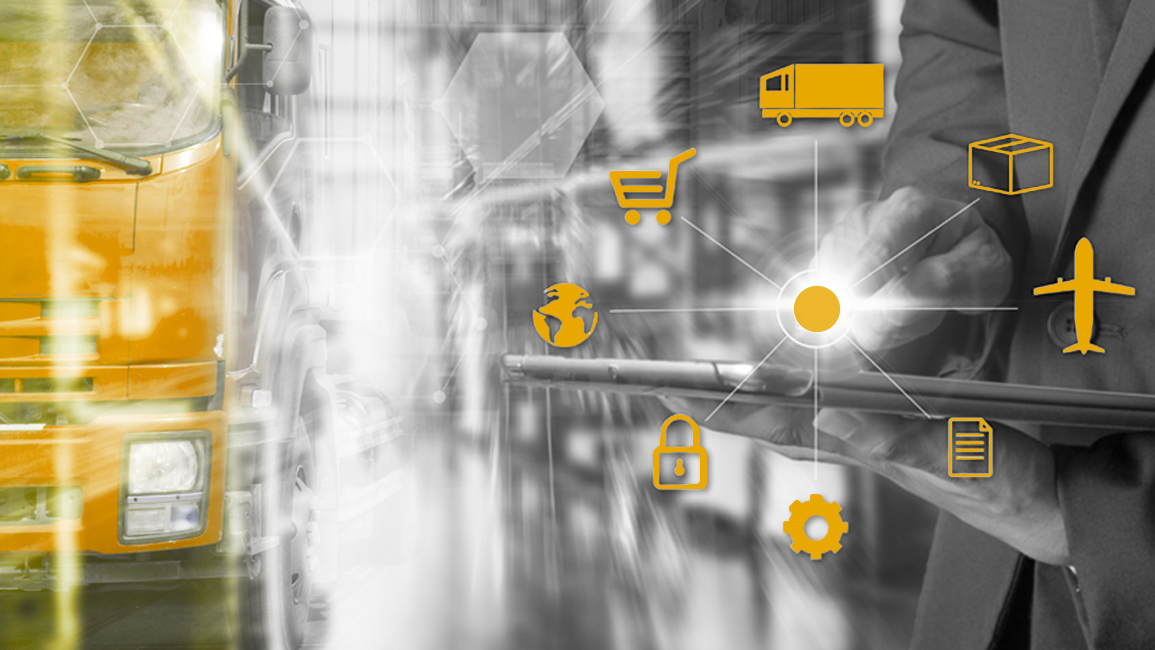Logistics is being challenged by disruptive market changes with high innovation pressure, demographic change and, last but not least, the Corona pandemic. The solution to meet this pressure: digital transformation. But where to start? Which projects are pushing the most? A capability map helps to identify and prioritize important construction sites.
Three million jobs. Around 270 billion euros in sales. Logistics is not only a factor critical to the success of the real economy, but also an important branch of industry in Germany. But disruptive market changes are putting the logistics industry under high pressure to innovate. And then there's the corona pandemic. An important instrument of the seemingly unsolvable tasks is digitalization.
Improve processes, save costs
However, the digitization list is long and runs right through all areas of logistics companies: from customer, freight and asset management to transport planning and transportation, self-driving vehicles and transport systems, drones or cross-industry IT topics such as artificial intelligence, IoT or cloud computing. Opportunities seem to be opening up everywhere to improve processes, save costs or inspire new customers with digital solutions. For logistics, IT is becoming an even more important factor for competitive differentiation than it already is today. This is because it not only paves the way for new, customer-oriented solutions, but is also the instrument for their efficient, transparent and reliable implementation.
According to a representative survey by Bitkom Research, 79 percent of logistics companies see digitization in logistics as the greatest challenge and at the same time as a great opportunity: whether, for example, for route planning with artificial intelligence, goods transport with autonomously driving trucks and drones, or blockchain for a transparent supply chain. However, only a minority of the approximately 500 logistics companies surveyed by Bitkom Research in spring 2019 are using such technologies. Although most companies in the industry expect digitization to speed up transport (92%), reduce logistics costs in the long term (85%), and make transport chains less vulnerable (79%).
Transparency, delivery capability and delivery reliability
Fraunhofer IML confirms that the main market drivers of digitization are increased requirements in terms of transparency, delivery capability and delivery reliability, as well as the desire for individualized products or services. At its core, this concerns the timely provision of information for tracking goods and merchandise or the integration of digital services into international networks.
Faced with this daunting task, logisticians are in danger of no longer seeing the forest for the trees. The sheer number of IT technologies ready for the market is overwhelming. Whether it's customer management systems and interfaces, shipment data monitoring, digital freight documents, vehicle management or predictive maintenance, the number of digital systems that can be used for different processes is now approaching 100.
Where should they start? Which digital solutions will deliver the greatest benefits for a manageable investment in the shortest possible time? This question cannot be answered across the board and at the push of a button for an entire industry, as the prerequisites and business models of logistics companies differ and the digital status quo determines the next steps. However, given the abundance of individual topics, wrong decisions and investments in the initial phase can have expensive and painful repercussions. A majority of logistics companies, for example, fear the high investment costs, even though they expect to reap the benefits.
Capability map offers structuring approach for business models
Particularly in the context of fundamental changes to business processes and business models and due to the diversity and complexity of digital solutions, it therefore pays to develop an overview map of the required (digital) capabilities - a so-called capability map. With this map of possible digital capabilities for all important functional areas of logistics companies, existing and not yet existing capabilities can be captured, structured, evaluated and finally designed.
Such a capability map depicts a company's business functions independently of its organizational structure, processes or people. It also reveals possible redundancies in projects. In some companies, for example, it becomes apparent that driven by different departments, identical projects and applications are set up. Using the digitization map, companies can identify the functionalities that are critical to business success and then focus on the most important ones according to the principle of "put the good in the pot, the bad in the jar".
The capability map serves as a structuring and analysis approach for digital transformation. It is used successfully in some industries. However, it has not yet been used in logistics, even though it sheds light on business processes and makes deficits transparent, which companies should optimize in a targeted manner. Another goal: leveraging synergies, identifying duplications.
Identifying the right digitization tool
In this way, it is possible to quickly identify which digital solutions are particularly relevant for the implementation of a business model: for example, for an eForwarder, the establishment of a digital marketplace or on-demand warehouse provider. Those who want to seize their business opportunity in on-demand warehousing and fulfillment, for example, virtually take on the role of an intermediary - a kind of Airbnb for logistics. The concept allows companies with excess warehouse capacity to fill their space. And it simultaneously offers retailers with temporary or seasonal storage needs the opportunity to find storage space without signing a long-term contract. To do so, merchants search a provider's platform for available warehouse space in their desired location.
With the help of the capability map for the digitization of logistics, it is possible to quickly define which digital solutions are indispensable for the business of an on-demand warehouse provider and which capabilities and applications it can do without. For the core processes, tools for warehousing as well as autonomous intralogistics and commissioning planning are absolutely essential. Cargo handling or contract services, on the other hand, play a lesser role. For forwarders, on the other hand, tools for scheduling, routing or forecasting are crucial in the context of transport planning. And when it comes to goods management solutions, digital freight documents and shipment data monitoring are very relevant. In contrast, robots, drones or IoT are likely to play only a minor role in a freight forwarder's business model.
First the customer, then the technology
And which digital technologies do logistics experts themselves consider to be relevant for the industry in the future? Artificial intelligence (AI) is at the top of the list for 71 percent. And almost 60 percent expect autonomously driving delivery trucks to transport goods between companies, and as many as 42 percent assume that drones will be used to deliver goods to end customers. But approaching digital transformation only from the perspective of technological possibilities could be going in the wrong direction.
We recommend changing the direction in which we look at things:
- Start consistently with customer requirements
- Develop the appropriate business model based on this
- Then examine what capabilities your own company needs to serve this business model
- Build up these capabilities
- Only then select the appropriate technology
Detecon is happy to accompany logistics companies on this path!








